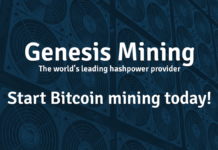How far will the cryptocurrency madness go? While the number of different currencies is always increasing, only a handful have attained enough market capitalization to be truly viable. Ethereum, a blockchain-based distributed computing platform, and its associated token, ether, is one of the most popular.
At the time of this writing, Ethereum (ETH) ranks second only to Bitcoin (BTC) in terms of market capitalization, with a total cap of almost $27 billion dollars and a daily volume of more than $750 million. In comparison, Bitcoin’s market cap exceeds $66 billion dollars and Litecoin (LTC), silver to Bitcoin’s gold, crests $3.2 billion.
[Note: On Thursday, Sept 13, the value of Bitcoin dropped precipitously due to an announcement by a Hong Kong-based cryptocurrency exchange that it would be shutting down because of new Chinese regulations. The changing value is not reflected in the numbers cited above.]
An Algorithm Perfectly Suited to GPUs
One of the advantages of Ethereum over Bitcoin or Litecoin has to do with the algorithm chosen to validate the proof-of-work (PoW). While BTC relies on SHA-256 and Litecoin on Scrypt for its hash function, Ethereum calls on an algorithm called Ethash, created especially for this purpose. In practice, it was designed from the start to prevent the development of dedicated ASICs.
Indeed, while SHA-256 and Scrypt are extremely compute-hungry, consequently rendering ASICs more efficient than our graphics cards (even more so than CPUs), Ethash is rather dependent on memory performance (frequency, timing, and bandwidth). With their fast GDDR5, GDDR5X, and HBM, graphics cards are perfectly suited to mine Ethereum.
Performance Varies Greatly By Card
However, not all boards are created equal. Certain GPU architectures are quicker and more effective than others, and not all cards are loaded with the same type of graphics memory. Naturally, then, we set out to determine for ourselves which models are the most profitable to use for mining, narrowing our focus to some of the most in-demand mainstream solutions from AMD and Nvidia.
Our comparison includes graphics cards armed with modern GPUs: AMD is represented by Ellesmere and Hawaii (that’s the Radeon R9 390, Radeon RX 470/480, and Radeon RX 570/580), while Nvidia-based cards include the GeForce GTX 1060 3GB and 6GB.
We had to exclude certain boards because they were too slow (previous-gen GeForce GTX 9-series, for example) or came up short on memory capacity (GeForce GTX 1050 2GB and Radeon RX 460 2GB). As you’ll soon see, those are important considerations, as two cards armed with the same GPU aren’t necessarily equal when it comes to mining Ethereum.
MORE: The Ethereum Effect: Graphics Card Price Watch
MORE: How To Mine Ethereum Now
MORE: Experiment: Build a (Profitable) Ethereum
MORE: Top 25 Cryptocurrencies By Market Cap
MORE: Best Graphics Cards
Our Social Networks: Facebook Instagram Pinterest Reddit Telegram Twitter Youtube







